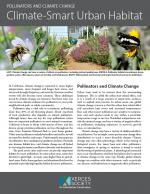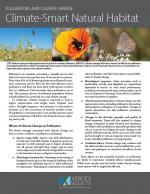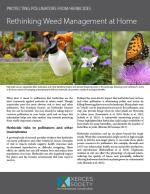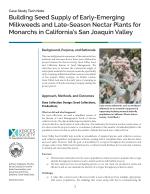As a science-based organization, the Xerces Society produces dozens of publications annually, all of which employ the best available research to guide effective conservation efforts. Our publications range from guidelines for land managers, to brochures offering overviews of key concepts related to invertebrate conservation, from books about supporting pollinators in farmland, to region-specific plant lists. We hope that whatever you are seeking—whether it's guidance on making a home or community garden pollinator-friendly, advice on developing a local pesticide reduction strategy, or detailed information on restoring habitat—you will find it here!
Find Publications
Use the search functions to sort by publication type (books, guidelines, fact sheets, etc.), location, and/or subject (agriculture, gardens, pollinators, pesticides, etc.).
In California, climate change is expected to cause higher temperatures, more frequent and longer heat waves, and increased drought frequency and severity. Extreme weather events will also become more common. These challenges posed by climate change are extensive, but there ways you can increase climate resilience for pollinators in your yard, neighborhood park, or whole community.
You can take several actions to alleviate the effects of climate change on pollinators. This fact sheet provides an overview of strategies to reduce the impacts of drought, increased temperatures, and frequent heat waves in agricultural lands. Although this fact sheet is centered on California, many lessons are more broadly applicable, and can provide a useful jumping-off point for climate-smart habitat planning for other regions.
Given the many ways that climate change is likely to impact pollinators and plant-pollinator interactions, we propose multiple strategies to increase climate resilience for pollinators in natural areas. Although this fact sheet is centered on California, many lessons are more broadly applicable, and can provide a useful jumping-off point for climate-smart habitat planning for other regions.
Improving pollinator habitat along roadsides and rights-of-way has many benefits, even beyond providing habitat for these important insects—including carbon sequestration and soil stabilization. Although this fact sheet is centered on California, many lessons are more broadly applicable, and can provide a useful jumping-off point for climate-smart habitat planning for other regions.







